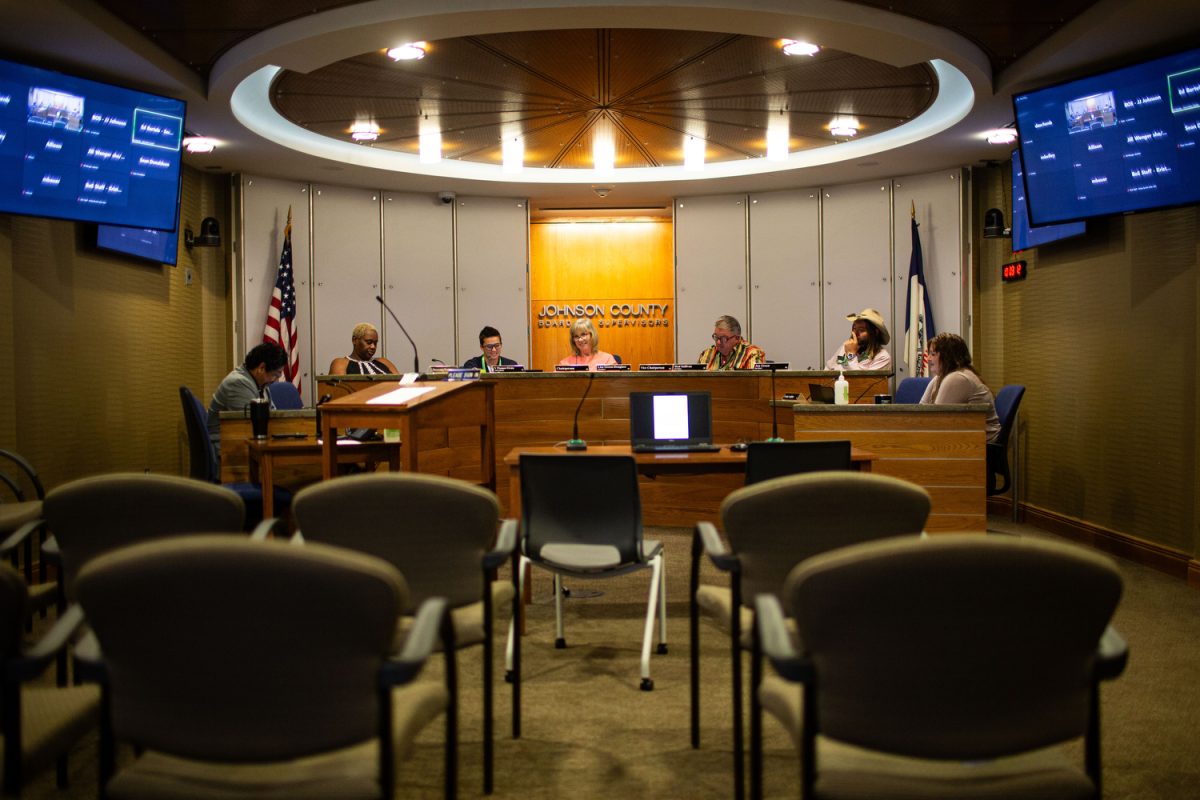A UI task force found a slew of inappropriate laboratory practices occurring in the Chemistry Building, which at least 11 occupants say have caused them to become ill since 2007, according to a report released Wednesday.
Of those occupants — which include two faculty members, one staff member, and seven graduate students — some reported respiratory symptoms, but the most pronounced symptoms have been headaches, short-term memory loss, disorientation, and difficulty concentrating.
Three of the ill occupants have been relocated in the Chemistry Building, and seven have been moved elsewhere. One undergraduate student also reported similar symptoms but left the building after finishing his or her course.
The illnesses — along with other complaints about the building’s state — prompted UI President Sally Mason and UI Provost Wallace Loh to establish a task force charged to investigate these health concerns, as well as the condition of the building in general.
After the task force was formed in April, the UI hired Bureau Veritas, a national consultant, and WorkSafe, a local consultant, to further evaluate the building. Barbara Eckstein, who chaired the task force, said the university paid roughly $30,000 to hire these groups.
The task force’s final report, released on Wednesday, reveals a large number of unsafe practices.
Among these are inappropriate use of fume hoods, clothing safeguards, and a disregard for basic laboratory-safety policies.
“It’s a significant issue for many people,” said Lar Fuortes, a representative from the Employee Health Clinic and a member of the task force. “It has really affected the lives of individuals and the department in ways I can’t address.”
The report outlines the significance of “dry drains” in the building’s laboratories. A dry drain enables vapors in the waste line pipes to enter the room or even a suite of rooms if doors are frequently opened. Each dry drain is a possible source of the potential illness-causing vapors that may have arisen from many areas throughout the building, according to the report.
Task force members conducted a series of tests involving the release of innocuous organic vapor with identifiable odor in specific locations. This showed evidence of vapor transmission through the dry drains.
Renovations to the building, constructed in the 1920s, have continued since July 2004. The project is scheduled to be completed in January 2010.
According to the report, construction workers failed to cover debris and propped some doors open unnecessarily, causing incorrect pressurization of the building.
The report reveals that both lab practices and construction projects negatively affected indoor air quality. Thus, both likely contributed to the health symptoms.
“I resist the idea that this would be shocking,” Eckstein said. “The university and every entity that has large buildings with different kinds of people has struggled to create and maintain environments that produce no health symptoms in anyone.”
The task force held two public forums upon its creation, giving the building’s occupants a chance to express their concerns.
“I think the university took this really seriously,” said UI ombudsperson Lois Cox, a member of the task force. “I very much hope [the task force’s recommendations] will be complied with. We will have a better system of reporting and checking if people say there’s a problem.”
Construction workers at the Chemistry Building carried on with the renovation project on Wednesday and dust filled the building.
To Eckstein’s knowledge, none of the affected occupants have taken legal action against the university.






